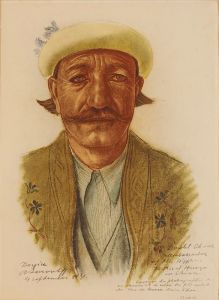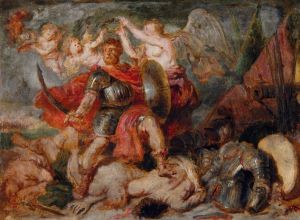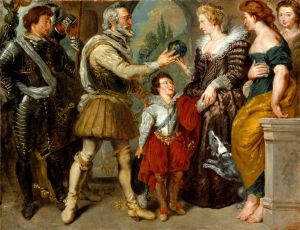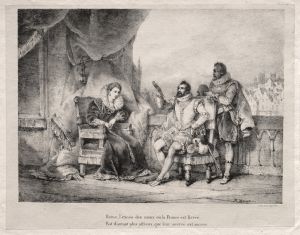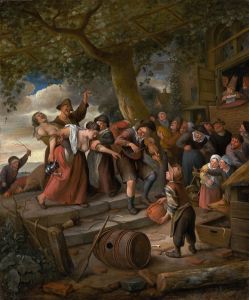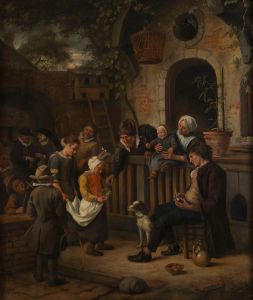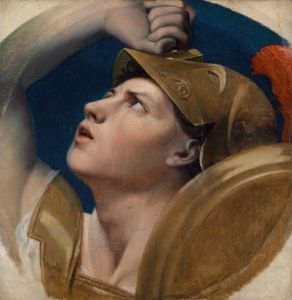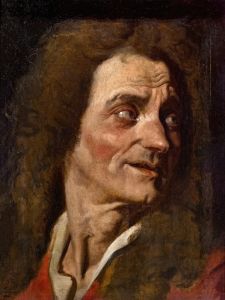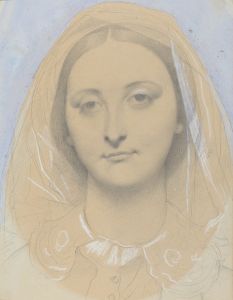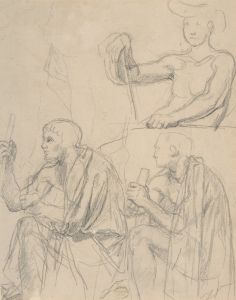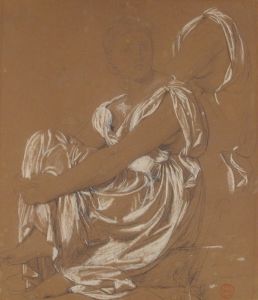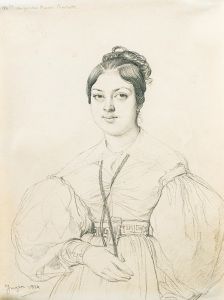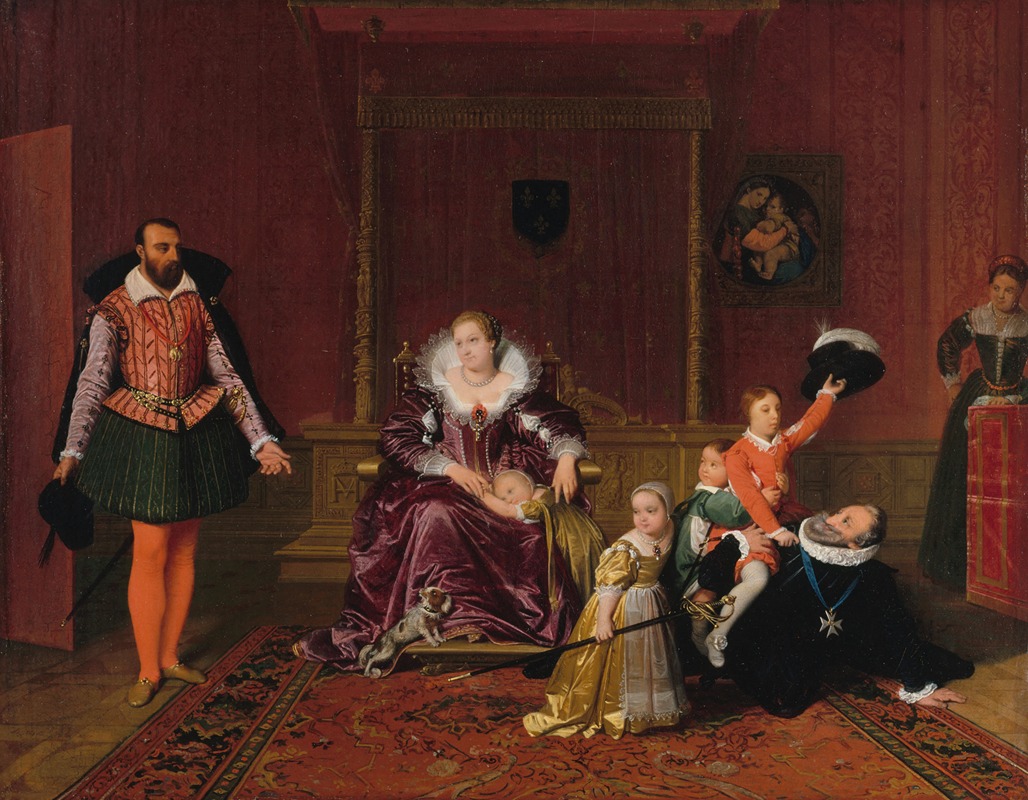
Henri IV jouant avec ses enfants au moment où l’ambassadeur d’Espagne est admis en sa présence
A hand-painted replica of Jean Auguste Dominique Ingres’s masterpiece Henri IV jouant avec ses enfants au moment où l’ambassadeur d’Espagne est admis en sa présence, meticulously crafted by professional artists to capture the true essence of the original. Each piece is created with museum-quality canvas and rare mineral pigments, carefully painted by experienced artists with delicate brushstrokes and rich, layered colors to perfectly recreate the texture of the original artwork. Unlike machine-printed reproductions, this hand-painted version brings the painting to life, infused with the artist’s emotions and skill in every stroke. Whether for personal collection or home decoration, it instantly elevates the artistic atmosphere of any space.
Henri IV jouant avec ses enfants au moment où l’ambassadeur d’Espagne est admis en sa présence is a painting by the French Neoclassical artist Jean Auguste Dominique Ingres. The title translates to "Henry IV Playing with His Children When the Ambassador of Spain is Admitted to His Presence." This artwork was completed in 1817 and is currently housed in the Musée des Beaux-Arts in Pau, France.
Jean Auguste Dominique Ingres (1780-1867) was a prominent French painter known for his precise draftsmanship and his role in the development of Neoclassical art. Ingres was a student of Jacques-Louis David, another influential Neoclassical artist, and he continued the tradition of classical themes and meticulous technique throughout his career.
The painting depicts a scene from the life of Henry IV of France (1553-1610), also known as Henry of Navarre. Henry IV was the first French monarch of the Bourbon branch of the Capetian dynasty. He is remembered for his efforts to promote religious tolerance in France, particularly through the Edict of Nantes, which granted rights to the Huguenots (French Protestants) and helped to end the French Wars of Religion.
In the artwork, Henry IV is shown in a domestic setting, playing with his children while an ambassador from Spain is being admitted to his presence. This scene is intended to highlight the king's dual role as both a ruler and a father, emphasizing his humanity and approachability. The painting captures a moment of informal intimacy, contrasting with the formal and often austere representations of monarchs in official portraits.
Ingres' composition is carefully balanced, with the figures arranged in a harmonious manner that guides the viewer's eye through the scene. The use of light and shadow adds depth and dimension to the painting, enhancing the realism of the figures and their surroundings. The artist's attention to detail is evident in the intricate rendering of the costumes, furnishings, and facial expressions.
The painting reflects Ingres' admiration for the Renaissance and his commitment to classical ideals. His precise lines and smooth surfaces are characteristic of his style, which sought to achieve clarity and purity of form. Ingres' work often focused on historical and mythological subjects, and this painting is a notable example of his ability to convey narrative through visual art.
Henri IV jouant avec ses enfants au moment où l’ambassadeur d’Espagne est admis en sa présence is an important work in Ingres' oeuvre, showcasing his skill as a painter and his interest in historical themes. It provides a glimpse into the personal life of a significant historical figure, while also demonstrating the artist's technical mastery and his dedication to the principles of Neoclassicism.





